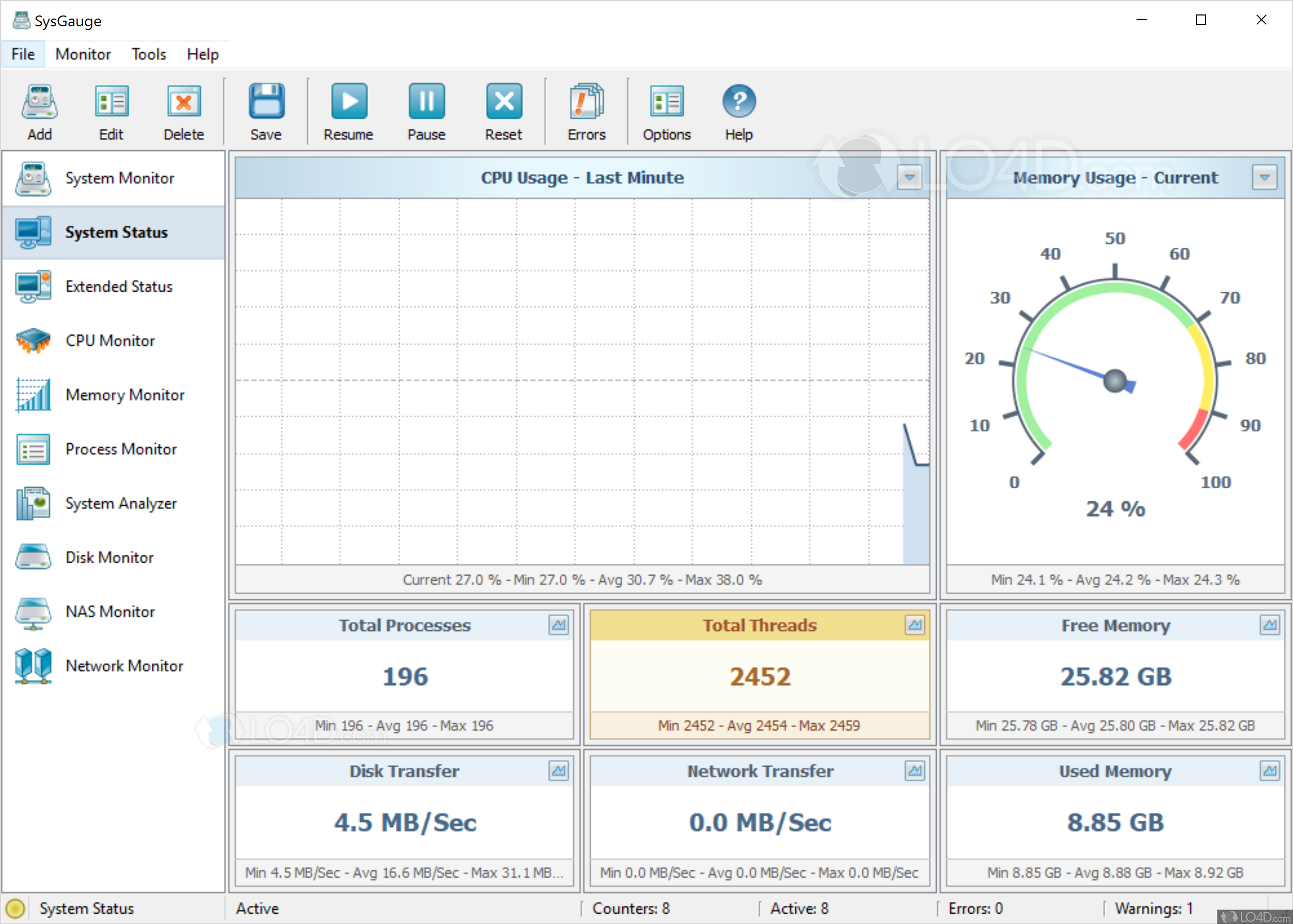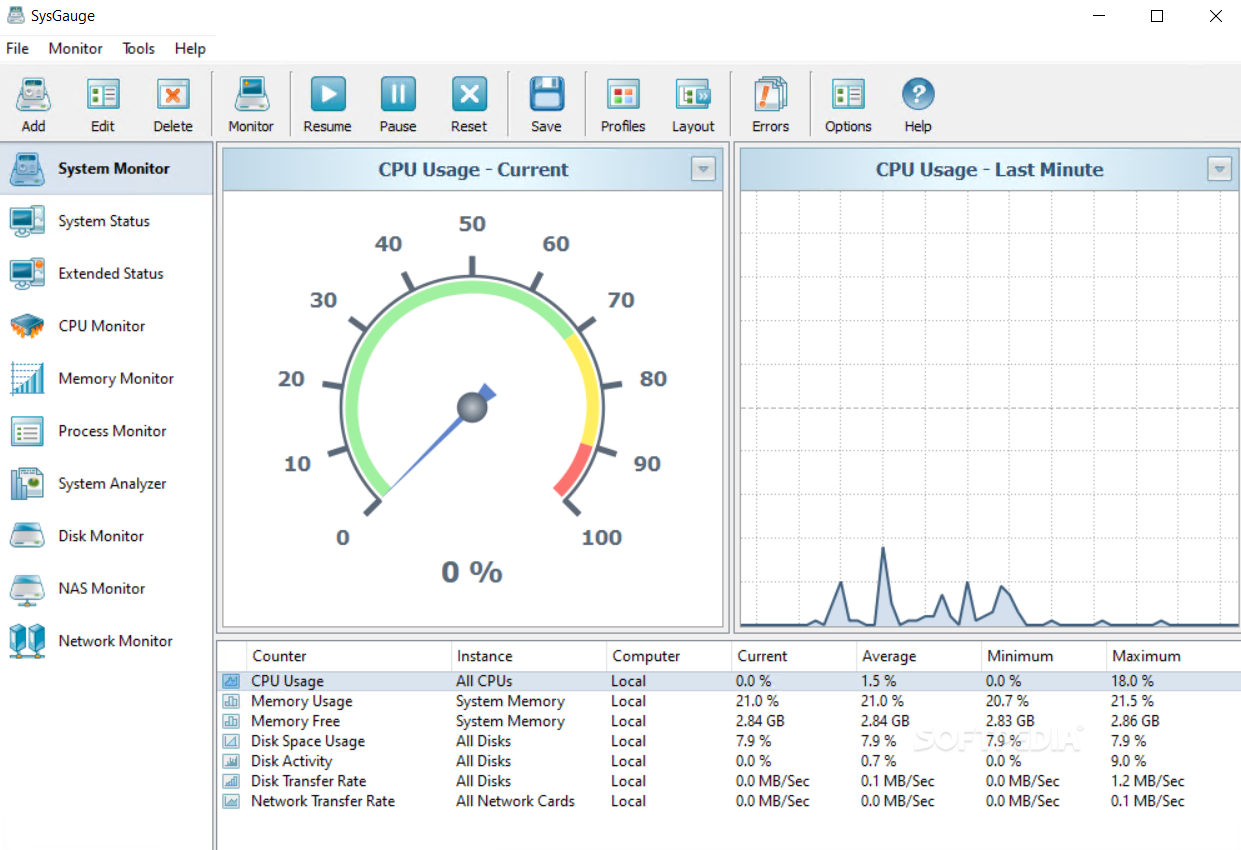


The difference in this edition is the emphasis on batch monitoring. For example, the program can simply monitor interrupt time for CPU 3, sent packets errors from Local Area Connection 2, disk write activity on a particular drive, and a lot more. Categories are easy to select, unveiling the type of monitoring to perform, as well as the exact target. Connect to remote PCs, view logs, and generate reportsĭefining a new counter doesn’t really require a lot of effort. You can do this for CPU, memory usage, disk I/O activity, operating system, process status, file system, as well as USB activity. On the bright side of things, the application lets you add custom counters to the dashboard. By default, you can view a gauge, chart, as well as list, all of them updating in real-time.Īt its core, the application is specialized in monitoring computer resources, providing complex reports, but also taking action when necessary. It comes with a default, dual-pane visualization of CPU consumption, but it can be switched to display resource consumption for different values and in different styles. You’re greeted by a fairly intuitive and pleasant interface. But most importantly you might want to first pay attention to the setup process, because you’re asked to configure a couple of port values to be able to connect via LAN or a web browser. Once installed and launched, the application starts to monitor computer resource consumption. In this regard, SysGauge Server comes with the means to enable monitoring of system resource consumption and other variables on multiple computers. Although using your own computer for personal activities might not require heavy resource monitoring, keeping an entire group of computers running at peak performance does.


 0 kommentar(er)
0 kommentar(er)
